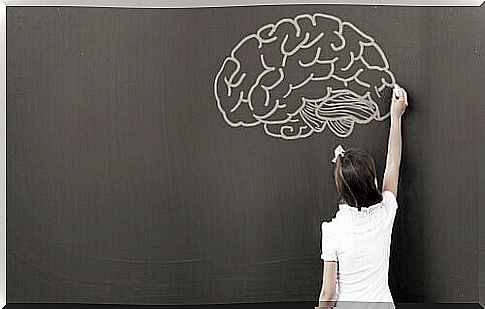Why Do Psychologists Use The WISC Test?

As we all know, healthcare professionals have various tools at their disposal to evaluate the potential problems of those who come for consultation. Psychologists mostly use standardized tests. When it comes to children is one of the most well known and used WISC test.
Despite the fact that the test is so widespread, not many people understand exactly what it assesses or how it can help in clinical and educational environments. Because of this, we will try to explain what this test consists of and why it is one of the tools that psychologists use the most.

What is the goal of the WISC test?
WISC is a test that psychologists use to evaluate a child’s cognitive function. Brain activity can be evaluated in functions such as memory, attention, perception, language and executive functions. These are fundamental for the adequate development of activities in children, both social and cognitive.
Therefore, one of the test’s goals is to be a starting point for making decisions about a child’s educational journey. This is due to the test’s ability to identify both strengths and weaknesses.
At the clinical level, this test identifies difficulties or cognitive impairments associated with certain disorders. When it comes to learning disabilities, it is absolutely essential, as it helps to identify the main problems.
What do psychologists take into account when using the WISC test?
During the implementation, interpretation and delivery of the report, psychologists must take into account various aspects that are gathered to strengthen the reliability of the results. They must also take into account two areas of interest: The quantitative and qualitative data the test offers.
Quantitative aspects
To explain this aspect correctly, we need to take different characteristics into account. One of them is that there are several subtests, and each of them gives a specific score. The experts use these scores to generate a scale. They will compare the person’s score with the average score for age.
This process is carried out to see if the score obtained is the expected one for the child’s age or if it is higher or lower.
For the WISC test, the average score is between eight and 11 points. A score below eight indicates that there are difficulties in an area. A score above 11 indicates that the child’s abilities are higher than the average for his age group.
Experts can also derive different indices from these tests which are complementary scores. These indices help to consolidate the information about specific functions and help to strengthen the figures achieved.
When the score is between 85 and 115, the abilities fall within the child’s age group. Some of the indices are:
- Verbal understanding. It assesses the ability to reason and express oneself verbally. In addition, experts can observe the ability to form concepts.
- Visuospatial features. The ability to understand spatial conditions, build geometric designs from a model and evaluate details.
- Liquid reasoning. Measures the ability to use reasoning to identify and apply rules.
- Working memory. This is the ability to handle and manipulate verbal and visual information in a mental way.
- Processing speed. Evaluates the ability to efficiently and quickly explore, discriminate and sort simple visual information.
Qualitative aspects
On the other hand, we have qualitative aspects that are equally important for the effective use of the WISC test. Through them, the results given by the test can be supported and adapted in a more appropriate way. In this case, aspects observed during the consultation and use of the tool must be taken into account.
The first relevant aspect is the observation and registration of the child’s attitude and behavior while the activity is performed. The experts take into account aspects such as:
- level of cooperation
- frustration tolerance.
- handling difficulties
- compensation tool
- state of mind
- non-verbal behavior
- motor behavior
- personal behavior
During the assessment, it is also important for the experts to take into account other factors. In this case, however, one must do this without the help of extra scores. These strategies can be useful at the time you start the treatment process.
Therefore, it is an advantage to find out if the child acquires information in a better way through a visual or auditory channel when it comes to strengthening learning.

The usefulness of the WISC test in the field of education
One of the main goals of the WISC test in the educational field is the establishment of cognitive skills in children with special educational needs. These may include learning disabilities and intellectual disabilities.
On the other hand, it helps to appreciate both the abilities and difficulties these children may have. All of this can facilitate the personalization of the learning process and place teachers and psychologists in an ideal position to optimize ways to motivate the child’s learning.
Finally, using the WISC test, one can predict the academic performance of each of the children. This is due to the fact that several cognitive functions can be evaluated from several different points of view.
These functions can be related to concepts that are necessary to develop specific aspects of learning. For example, they need a good foundation in language to be able to develop the reading and writing process properly.
The benefits of WISC in the clinical field
The WISC test is also widely used in the clinical field. First, it is useful to gather information to make the first main diagnosis, as well as the differential diagnosis of mental, neurological or psychiatric disorders. The cognitive effects are found especially in diseases or disorders.
On the other hand, it is useful when preparing and developing utilities. With the results it gives the experts, they can discover the child’s strengths.
Conclusion
Finally, it is important to note that this is one of the most commonly used tests for two reasons:
- In a clinical setting, it helps experts make diagnoses.
- In a non-clinical environment, it provides experts with a profile of the child’s most and least developed skills.
By assessing different cognitive functions, it provides comprehensive information on all major aspects. Because of this, this test is not necessarily performed on a child because it is suspected that the child has some form of disorder or disease.









